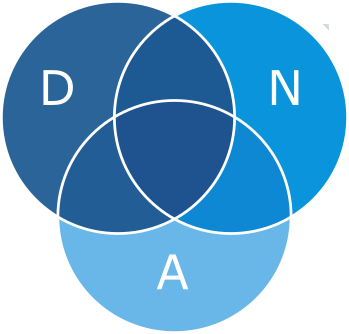Intelligent data analysis
In industry as well as in electrical energy supply (generation, transmission and distribution), more and more measuring devices are being installed that are able to record data at periodic intervals.
Nowadays, most measuring devices and sensors have communication interfaces that allow easy connection of the collected measurement data to a central database.
The result is a large database with a large amount of available data.
Applications where large amounts of data are usually stored in the energy supply are:
- Online monitoring systems for condition monitoring of operating equipment
- Permanent monitoring of power quality (Power Quality Monitoring)
- Permanent monitoring of electrical energy consumption
- Smart metering
- Monitoring of process signals in industry (e.g. throughput, flow, speed, etc.)
- Weather data to control the utilisation of power circuits
It is undeniable that data contain a high level of information about monitored processes.
The larger the amount of data, the greater the information content that is hidden behind the data.
Unfortunately, it is usually also the case that the larger the amount of data, the more difficult it becomes to draw useful insights from the data.
For this reason, the potential or added value of measurement data is rarely exploited in practice.
Conventional data evaluation is often limited to a simple check of the violation of limit values. For example, a warning is determined if a signal (e.g. temperature) exceeds a preset value. This type of data evaluation is sufficient for certain applications.
However, there are use cases where great business benefits could be achieved if a behaviour pattern is extracted or learned from the data.
This type of data evaluation is called "intelligent data evaluation".

